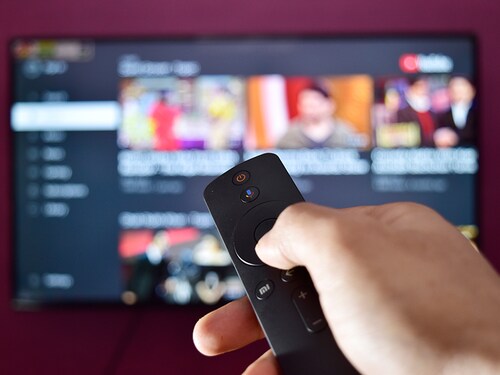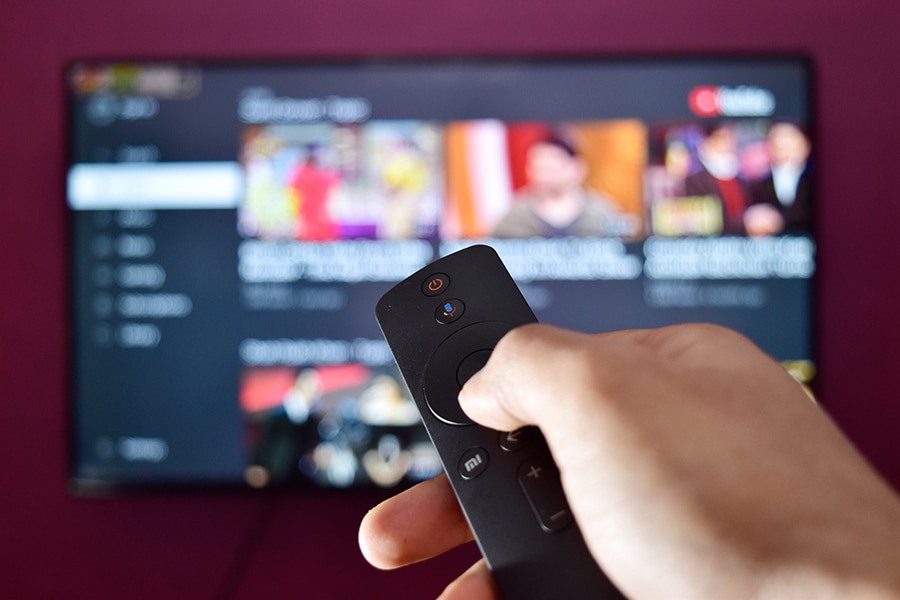Ad-vantage TV and digital
In a Covid world, brands are counting on a judicious mix of TV and digital advertising to reach out to potential consumers


 Image: Shutterstock [br]Dabur knows a thing or two about putting its money where its mouth is.
Image: Shutterstock [br]Dabur knows a thing or two about putting its money where its mouth is.
As the pandemic set in, and with it a spate of lockdowns, a lot has changed for consumers – including their media consumption habits. The home-grown FMCG major sensed quickly that it had to recalibrate its media spends. If the consumer is God, TV became the temple. “We advertised heavily on Doordarshan and the reruns of its historical series like Ramayana and Mahabharat, which were grabbing eyeballs,” says Mohit Malhotra, chief executive officer of Dabur India, alluding to the April lockdown. Subsequently, advertising on traditional media like newspapers was pruned, Malhotra lets on, and Dabur increased its presence on news channels as consumers stayed glued to the box. There was also a corresponding steep jump in advertising on digital media.
The move made ample business sense. The strict lockdown from March-end and subsequent extensions till May, coupled with work from home, resulted in increased TV viewership during the first half of this year, TV viewership was 9 percent higher than in the same period last year, according to recent BARC-Nielsen data. News on TV turned out to be the biggest gainer, a jump of 43% (business news leapfrogged 44%), followed by kids programming, movies and devotional. Though the overall advertising volumes on TV during the first half dipped over a year ago, April-June numbers were better than last year. “The trend (advertising) is here to stay,” says Malhotra, who has sharpened his focus on digital media.
Dabur, it turns out, is not alone in reshaping its media allocation priorities. PepsiCo India too had a relook. With digital and mobile consumption seeing a sharp uptick, the company focused on advertising where the consumer was. There has been a significant increase in the use of in-home media as a direct result of people staying indoors for the last few months, avers Tarun Bhagat, brand director (Pepsi, Gatorade and Aquafina) at PepsiCo India. TV viewership has climbed, but digital consumption, including social media and streaming platforms, has grown at an ever-faster pace. “During the last few months, PepsiCo recalibrated its marketing plans with spends on digital, mobile and TV mediums being higher than what we originally planned for,” Bhagat adds.
Welcome to the new normal where brands are putting their precious marketing rupees more into TV and digital, as a pandemic-battered print media is taking time to recover. With a gradual unlockdown, the restart of production at general entertainment channels (GECs) and the upcoming Indian Premier League (IPL), TV and digital are set to make most of the green shoots that the country has been witnessing over the last two months. The pandemic, reckon marketing analysts, has created a captive audience for TV and digital, with print fading in this period due to the multiple challenges of delivery, safety and availability of distributors. “Covid has proved one thing as a certainty: that news is a zero-sum game where one’s loss is another’s gain,” says N Chandramouli, chief creative officer at TRA Research. The pandemic, he adds, has also changed the parameters of gauging the performance of every medium. “It’s no longer about growth over last year. It’s all about a rebound,” he says. Hindi news and GEC channels have not only seen a bounce-back but a growth over the last year. In June, while Hindi news saw 7.6 million ad volumes, for Hindi GEC, the jump was 16% at 8.1 million. Brands, clearly, are going where the viewers are.
Take, for instance, Dish TV. Being a TV and digital entertainment provider, the main focus of the company pre-Covid was TV and digital platforms. Other supplementary mediums like OOH and print were used tactically, especially during festivals and high-sales periods. During the lockdown, customers were restricted indoors, so TV and digital gained prominence, says Sukhpreet Singh, corporate head (marketing) at Dish TV. “Though our TV spends have remained consistent, digital has gone up by 25-30 percent at the expense of other conventional mediums such as OOH, cinema and activations,” says Singh. The rise of digital and direct to customer medium, he lets on, is rising in media planning. “Our own touchpoints are becoming primary,” he says, adding that it is still premature to think about the use of outdoor and ‘hot spot’ mediums like cinema and malls for advertising.
For Panasonic India, the consumer durable maker, digital and TV serve different purposes. While digital was the main touch point when it came to reaching out to the consumer base, TV as a medium was used for reach and brand building. “Wwe plan to continue that way,” says Shirish Agarwal, head (marketing, communications and brand), at Panasonic India. During the lockdown, though, the marketing mix changed for most of brands across industry verticals. Digital, Agarwal adds, will continue to be the main medium for communication. “Almost 40% of our total investment will be in digital as a medium, followed by TV, and print,” he says.
Grocery etailer Grofers too there has been a change in strategy. While the role of digital media in performance marketing has been consistent both pre and post-Covid, digital previously played a support role to TV, print, and other mass media channels for brand building and impact campaigns. Post-Covid, Grofers has seen an increase in digital media consumption (across video, music and other e-content). “It has now taken a central role in our media mix with around 70% share for brand marketing today,” says Prashant Verma, head of marketing at Grofers. Within digital, he points out, leading OTTs and shorter brand films on YouTube and Facebook have done well. “This trend will continue for the rest of the year,” he says.
Due to the natural demand and shift towards online grocery, return on investment on media spends has improved by 4x. “Keeping this in mind, we have budgeted for moderate media spends this year as we are able to get more with less,” says Verma. The focus, he adds, will be on digital-led mediums as consumers are turning to digital devices to keep themselves entertained, engaged and informed.
For Policybazaar, an online insurance aggregator that has been advertising heavily on TV, investment in television will continue. “We invested majorly on TV and digital pre-Covid, and still continue to do so,” says Sharat Dhall, chief operating officer at Policybazaar. The company, he explains, has adapted its TV buying strategy to take advantage of changing viewership patterns in the work from home scenario. While the lead mediums continue to be TV and digital, the insurance aggregator has actively started working on influencer marketing to educate the customer about the need for health and term insurance.
Roca India, the Indian subsidiary of Spanish sanitary ware maker, has shifted its focus to digital. “Given the current market scenario, there is huge focus on digital marketing rather than in-shop and outdoor as customers now prefer to shop online,” says R Sreenivasan, head of marketing at Roca Bathroom Products. Prior to Covid, the company had a 50:50 mix of above the line (ATL) and below the line (BTL) marketing strategies, and digital too was a big part of the pie. However, adapting to the new normal, the outflow and engagement on digital front has risen followed by certain activities at BTL levels. “This is going to be the trend for the year at least,” he adds.
Marketers clearly are undergoing a churn in their media spend strategy, and the biggest beneficiaries during the pandemic are TV and digital.
First Published: Aug 26, 2020, 13:31
Subscribe Now